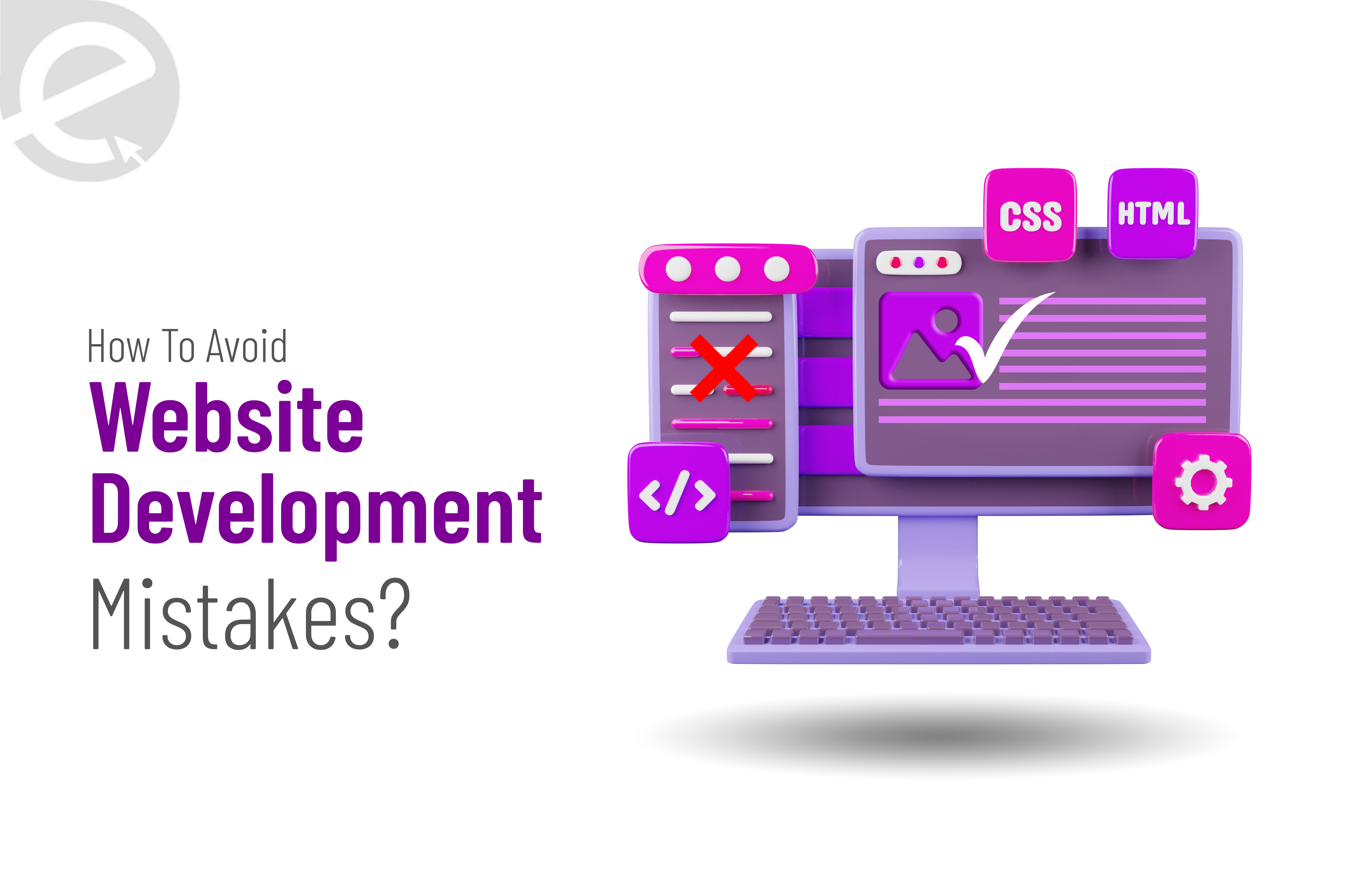
Basic and Trending Industry Insights
We Develop Websites Keeping Marketing in Mind
Book A Call
Video Optimization For Size and Quality
 Jan. 21, 2022, 11:24 AM
Jan. 21, 2022, 11:24 AM- By Eclick Softwares and Solutions

Since the last few years, a lot of businesses have started using videos as their integral part of their application. Videos are indeed a great direction since they are more engaging and can create double conversion rates and increase the visitor's time spent on a website. Likewise, videos draw the customers towards exploring the product and services detail. But, the issues arising on the video playback will make everything go sideways.
Â
What Are the Video Playback Issues?
The video playback issues are related directly to the video's size and bitrate. Thus, higher network speed will be necessary for a smooth playback for the videos with high bitrate or large dimensions. The result is longer start-up times, and with the network failing to supply the video much faster than during the video playback, the videos will stall.Â
Â
What is the Solution to Video Playback Issues?
The video playback issues can be prevented from occurring by running the basic optimizations of the videos before they are uploaded on the websites. Making the files smaller in some way or the other but maintaining the quality is the quick solution. Optimizing the videos for playback will avoid stalls and keep the customers engaged to the last minute.
Â
How to Prioritize Video User Experience?
When the videos have to be optimized for the website, then the users have to be prioritized with good user experiences. Good UX helps in improving user engagement with the videos, so user experience must be a top priority. Follow these tips to get it done -Â
Â
  i. Forgo the AutoplayÂ
Several video platforms include an auto-playing video files option. Get rid of the autoplay option. Allow the users to control when the videos are playing.
Â
  ii. Pay Heed to the Screen Real Estate
At the same time, do not interrupt the video experience of the users with the annoying pop-ups or ads which use the valuable screen real estate.
Â
  iii. For Mobiles, Resize the Videos -Â
Both the page content and video content should be resized for mobile devices. Make sure you have embedded the videos, which responsively adjust based on the display capabilities of the users.
Â
  iv. Give the Users Low-Bandwidth OptionsÂ
Everyone will not be viewing your videos using the high-speed broadband connection. It is on slower connections that the viewers will be viewing the videos, so offer slower connections to the viewers that they have the option to play the compressed videos of the files and bypass the videos altogether.Â
Â
Still not sure whether the users will be watching your videos? Then use the standard conversion rate optimization techniques, like the A/B Testing for testing. It will guide you towards making more informed decisions regarding where should you invest and how should you prioritize video efforts. Keep in mind, people watch videos for entertainment and for learning something. Users will thank you when you create videos accordingly.
Â
The Common Types of Video Files
Â
There are different video file types - some play better than the rest based on different usage cases. Even matching the file types to the optimal platform helps in reducing compression along with the playback issues, thus using less energy. These are the five most common video formats -Â
- .mp4Â compression offers a good quality video with a small video file size.Â
- .flv is the Flash video file format, which was once useful across the web, but with Flash content’s popularity that declined, it is not playing on most mobile devices, so it is not at all recommended.
- .mov is the native QuickTime format that helps in creating high-quality video file size, but it needs QuickTime for playback.Â
- .avis developed by Microsoft in the early 90s favors the small files since playing the large-sized files is not useful for the web playback.Â
- .wmvindicates a good video quality even with large sizes. Playing this format on Mac machines is hard unless you are having a cross-platform media player, like VLC.Â
Â
All these are not, of course, all available video formats, but these are a few of the widely used ones. So, you have to follow the standards at the time of creating, editing, and compressing the videos. There will be additional or unnecessary disturbances with the proprietary formats. For playback, this is particularly relevant. In case, the format that you have chosen makes the users download anything first, then these videos will not work.Â
Â
What Are the Recommended Settings for the HD Videos?
Â
When the settings are only needed, then these are the basic recommendations for being used at the time of compressing the HD videos to be uploaded to the web, with the original being 1920 x 1080 pixels.
Â
 1.Format MP4 with file extension .mp4
Â
 2.VideoÂ
- Codec: H264 (High Profile)
- Frame Rate : Constant - 24, 25, 30 or 60
- Frame Size / Resolution : 1920 x 1080 (1080p)
- Fields : Progressive
- Bitrate : 5,000 - 10, 000 kbit/s.Â
Â
 3. Audio
  • Codec: AAC -LCÂ
  • Bitrate: 320 kbit/s
  • Sample Rate: 44.100 or 48,000 kHz (retention of original sample rate)
Â
Optimizing the Videos
Â
Similar to the images, the videos have to be optimized for uploading to the web for ensuring speedy playback. Most video uploads, specifically the self-hosted videos fail in streaming quickly and sometimes pause at the time of playback. Fortunately, plenty of programs are available for formatting videos, file-setting rearrangement for faster playback that helps the videos in streaming with much more smoothness across multiple devices. For example, Handbrake is a popular open-source video transcoder that is used to optimize videos, thus converting the video files and bidding farewell to DVDs.
Â
Using Handbrake is extremely easy. For optimizing the video for the web, by using Handbrake, follow these steps -Â
  1. Click the “source†to select the video.
  2. In the “file†box, set the destination for the video to be saved.
  3. Set it to "Constant Quality" in the "Quality" field of about 20 which is good to 25 which is decent. Automatically, this feature sets up a good video quality.
  4. Check the small box showing “Web Optimizedâ€.
  5. Now click on the “Start†button and then start encoding.
Â
Video Length
Â
So, the most crucial things that must be done are improving user experience and reducing the environmental impact of the video contents for minimizing video length. Even being optimized, if the video files are too large, then the easiest way is to reduce their size by editing the contents so the primary message is flashed in front and center. Then, if your videos should be shared, then say the entire matter within a few minutes.
Â
The smaller videos start to play faster and stall much lesser, thereby improving user experiences of your business website. The online video is a highly powerful tool in marketing strategy. Nevertheless, success needs careful planning as well as consideration. So, by following a well-defined UX, video optimization, and hosting practices, you will be assured the video keeps the users engaged and even reduced the environmental impacts altogether.
Related Blog
- By Eclick Softwares and Solutions
- February 7, 2025
Common Website Developmen ...
A smooth-working website is the result of strong codes, SEO, ...
Read More- By Eclick Softwares and Solutions
- January 20, 2025
How Useful Is Local SEO F ...
Properly implementing Local SEO strategies for a small busin ...
Read MoreFeel free to contact us gg
Search Blog...
Recent Posts
Eclick Services







